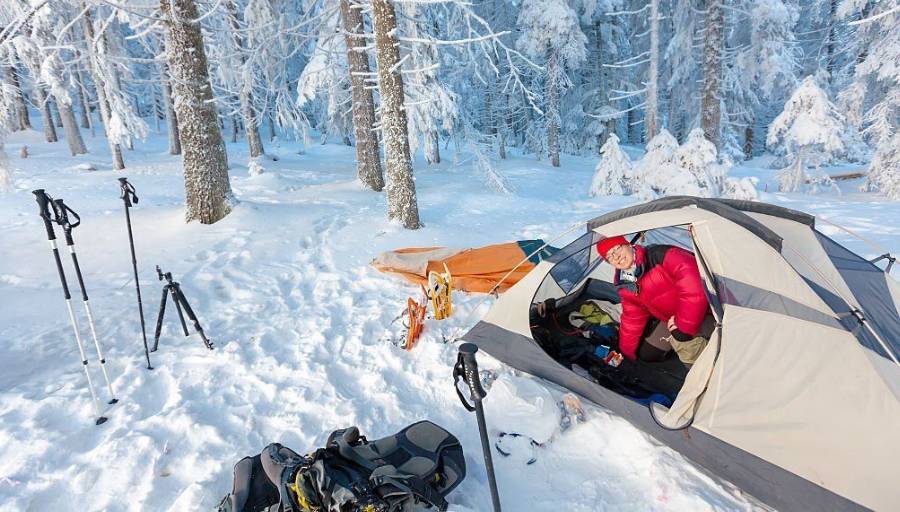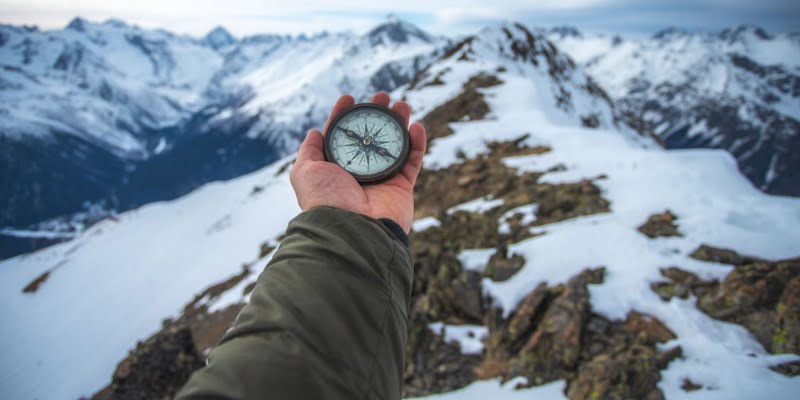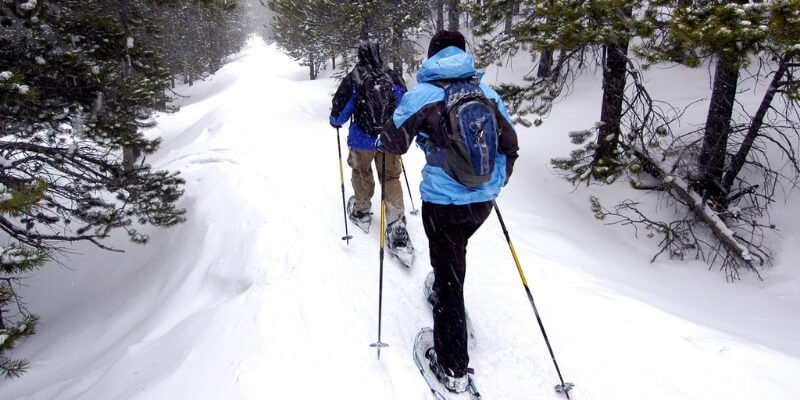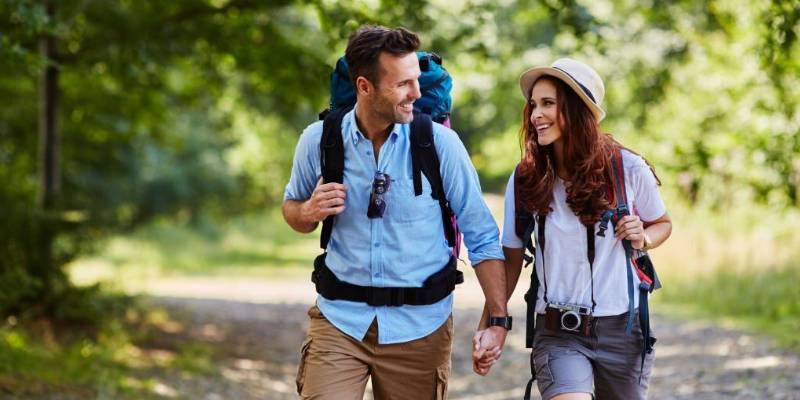Is there an ideal age to start hiking?
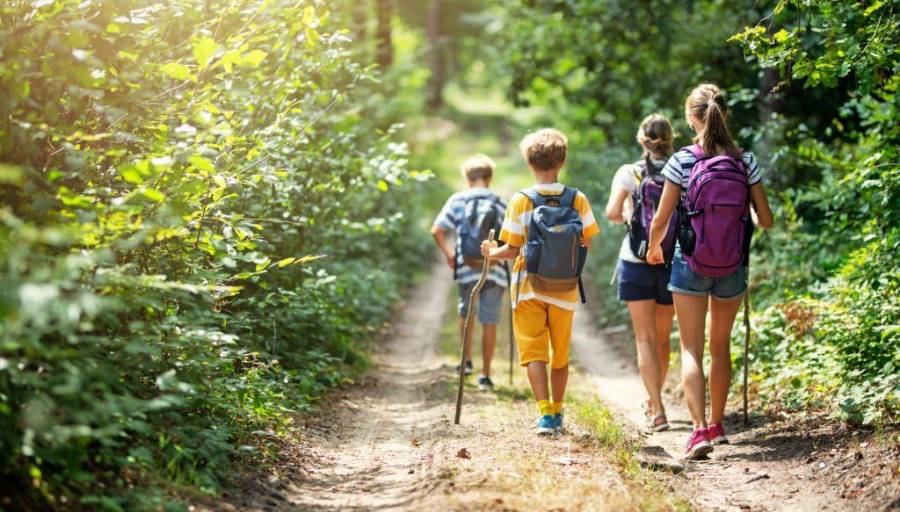
Are you wondering whether you or your child are old enough to start hiking? The real question, however, is whether there is an ideal age to begin exploring nature and discovering flora and fauna.
You’ll find that it’s possible to hit the trails near your home at any age, even for babies. However, it’s necessary to adapt these excursions based on age and initial physical capabilities. Focus on this important question and on the basics to know before you or your child starts hiking.
The Ideal Age to Start Short Hiking
In addition to the casual Sunday stroll, you might be curious about the ideal age for your child to join you on more extensive hikes. Let’s explore the possibilities, starting with the youngest adventurers—babies!
Walking is good for babies
Are you passionate about hiking and are young parents? Well, you’ll be happy to know that your baby can accompany you on very specific hikes! Of course, your kids will not accompany you while walking, but several support systems are designed to allow you to remain free of your movements while walking while remaining in contact with your baby.
We will see them later. For the moment, we will focus on the benefits for your baby of accompanying you during your walks. The wide variety of sights, sounds, and colors experienced during a walk is beneficial for babies. Indeed, these precisely need sensory stimuli to help their brain develop and to get to know the world. A hike in your presence will allow your kids to see new things, and feel new sensations while remaining safe.
Preparing for a walk with baby
A hike must be prepared and organized, we have already talked about it, but it must be even more so when you go with your child under two years old. You should already know that a toddler (under the age of two) is more prone to body heat loss than an adult.
To avoid endangering it, you will therefore have to choose the time of the hike carefully. Avoid days that are too cold and too hot and prefer mid-season. Spring seems to be the best season to go hiking with Babies. It is not too hot there, the wind is less violent than in autumn and the sharp cold has disappeared. Cover the extremities of your child’s body, especially hands, and feet even though body heat loss is greater in these areas.
Don’t forget either a cap and sunscreen if the sun comes out or a very warm hat for the chilly mornings. To get your kids used to this novelty little by little, you can also plan a calm hike in the middle of nature that lasts an hour or two at most. During this time, do not hesitate to multiply the breaks to see that he is well and that he does not miss anything. Hydration is therefore a sensitive point: remember to always bring something to hydrate and feed it even if you think that the hike will only last half an hour.
When we discussed the methods for understanding and following the markings while hiking, we had already seen how quickly you could get lost. So make sure to plan your hike with baby!
Attachment systems to take a baby on a ride
Several attachment systems are available on the market. Also called baby carriers, they allow your baby to accompany you on all your adventures! They must be chosen according to the morphology of your child and the type of hike you plan to do. Because they are very different from each other.
Here are the 2 main models to discover:
- Lightweight baby carrier: this model offers a physical separation between the wearer’s body and the baby being transported. This allows better ventilation and therefore a reduction in the effect of perspiration. The Little Life Ranger and Little Life Traveler baby carriers are both light and interesting models for hikes of an hour or two.
- Hiking baby carrier: technically, it is identical to the lightweight baby carrier. Except that this system adopts minimal protection against the sun and the rain and that it incorporates numerous storage spaces such as a hiking backpack. The Osprey Poco Plus baby carrier and the Kid Comfort Lite model from Deuter are top-rated and popular with hikers.
But what about baby carriers that have been very fashionable in recent years? Ideal for short trips, they can become unsuitable for hikes lasting several hours. Uneven and uneven terrain, such as some country or mountain trails, presents risks for your back with this attachment system.
On the other hand, they are a real solution for walking your baby for a few weeks whereas a baby carrier is more dedicated to children of several months. It is therefore up to you to find the best way to take your baby on your hikes according to his age and morphology!

The Ideal Age to Start Multi-kilometer Hikes
From the age of 3, on average, children take pleasure in walking for several kilometers. At this age, kids are eager to explore the world around them independently and delight in discovering new landscapes. This presents a perfect opportunity to introduce them to the walking and hiking trails in your vicinity!
The development of young children
Knowing how to go hiking with children is not so easy! Their pace is different from yours. They don’t have the same patience as us adults nor do they have the same stamina. However, their relative walking speed will allow you to take them on walking and hiking trails.
Childhood is a time of continuous learning, and short hikes prove to be ideal for the sensory and intellectual development of your son or daughter. This is the perfect opportunity to learn the basics of the names of flowers, and trees or to develop a taste for travel. Over the 2 or 3 kilometers of this type of hike, the visible places vary, the colors are almost endless and nature is often omnipresent. Such a walk is therefore a taste of the holidays that the whole family can take advantage of!
Adapt the course to the child’s abilities
3 or 4 years old, depending on the child, is the ideal age for them to start frolicking on their own for several kilometers. On flat ground, it can reach a more regular rhythm which will oscillate between 1 and 2 km/h. Knowing this, two opportunities are available to you: either you leave for 2 kilometers without a break or an hour’s walk, or you try the half-day walk with 3 or 4 km spaced out with deserved breaks.
Choose according to your child’s physical abilities and tastes. If he likes to exert himself physically, the first option is then the only one possible. On the other hand, if he is curious about nature and is passionate about his surroundings, then the breaks will be an opportunity to discuss what you have seen along the way. Either way, remember to base your pace on your kids to make them feel like they’re leading the way.
The Right Time to Start Day Hiking
Do you enjoy spending the whole day walking, with a picnic break at lunchtime? If so, you might be wondering at what age your child can accompany you on such adventures. The answer is twofold: when kids’ bodies allow them to endure longer walks, and when they are capable of shouldering some of the equipment necessary for such a hike.
The ideal age to discover the mountain
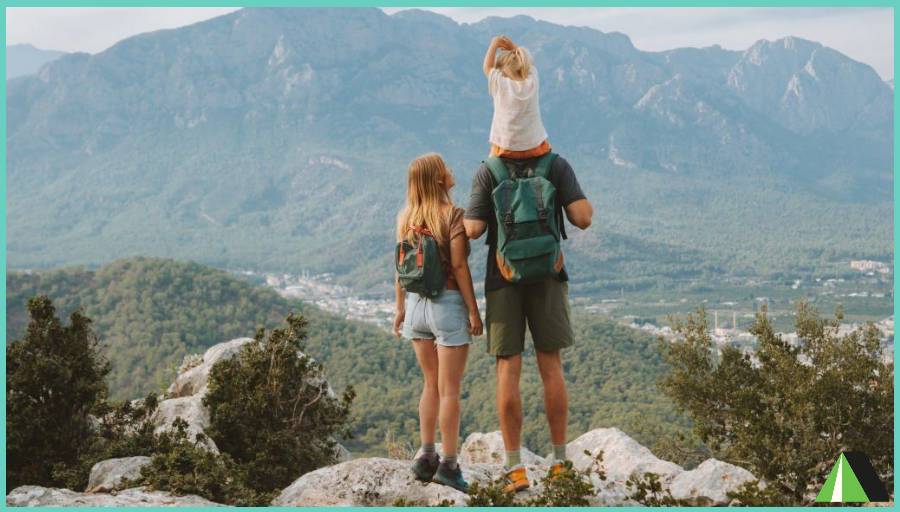
Between the ages of 8 and 10, depending on the kid’s constitution, a child sees his/her joints forming and his/her bones solidifying. The cartilage gradually gives way to the bones of a preadolescent. Physically, the 8-year-old becomes capable of traversing more uneven trails than before. They can walk on rocky paths typical of the mountains. On the other hand, they remain more sensitive than an adult to acute mountain sickness. This is why it can be interesting to try day hikes in the middle of the mountains at this age.
The first specialized equipment for your child
Here, I am not talking about the usual system of 3 layers of clothing, which is a principle applicable to any age, nor about the cap, the hat, or the sunglasses, but about the hiking equipment that the child 8 years old can already take away. Start with the junior backpack, made by many famous brands today.
Ranging in volume from 7 to 40 liters, it possesses all the features of an adult hiking backpack: a waist and/or chest belt, adjustable fasteners, numerous pockets, and sometimes even a compartment designed for a hydration bladder! Your child will take pride in carrying their hiking water bottle and snacks for the lunchtime picnic.
In a small pocket, your kids can even slip a few energy bars if a craving sets in. More generally, you will find quality children’s hiking shoes at Online Shop. Whether low or high-waisted, these shoes will protect the still fragile ankles of your daughters or sons, enabling them to navigate even the most uneven paths.
The Ideal Age for Long-distance Hiking
Long-distance hiking trails can be completed in several days. Some of them require several weeks of walking. They often allow you to cross exceptional natural regions and discover fabulous landscapes. But their difficulty is among the highest in the world.
As with many long-distance hiking trails, the significant elevations and the accumulation of hundreds of kilometers on foot force the hiker to surpass himself to reach the end of the path. You will therefore understand that children cannot try the adventure! On the other hand, teenagers who have good endurance and better muscular strength than children can try their luck on several long-distance hikes. It is even the ideal age to discover the sensations of a long-distance hiking trail.
Before going, it is necessary to approach this type of trail with caution! While adult hikers must be physically prepared for daily walking, teenagers will inevitably have similar requirements.
Start Hiking After Retirement
During active life, you don’t necessarily have the time or the energy to finally start hiking. Retirement on the other hand is the perfect opportunity to get started at your own pace!
You are certainly wondering if it is good for your health or if it is a good idea to solicit your body over 50. The answer is yes in both cases. Beyond the age of 50, regular and non-intense physical activity is also recommended by all doctors. At this age, the body can no longer provide intense effort but it is quite capable of providing one over time. Hiking is also at the top of the physical activities recommended for seniors.
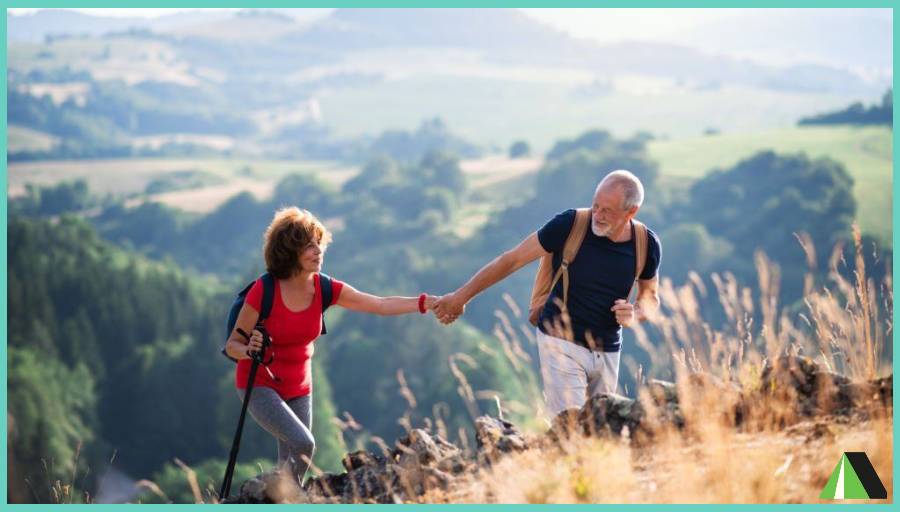
Here are many benefits that walking can provide for seniors:
- Improved cardiovascular rhythm
- Decrease in several age-related health problems such as osteoarthritis, osteoporosis, obesity
- Improved morale and reduced risk of anxiety and depression
- Muscle fitness
But then, at what pace should you start hiking in retirement? The best thing to do, if you’ve never really walked in your active life, starts with half-day hikes. For this, I advise you to find the guide corresponding to your department, region, or your natural region so that you can try some easy hikes near you. These hikes are between 5 km and 25 km long, which allows you to choose the one you like the most and to do it at your own pace.
Note that you don’t have to keep the 4 km/h rhythm indicated in the booklet. It will be up to you to find yours! During the walk, don’t hesitate to take breaks as soon as you feel the need and to eat often and drink regularly. A healthy, balanced diet rich in carbohydrates will be of great help to you so that your body can get used to hiking more easily. After a few hikes of a few hours and then a day, nothing prevents you from trying long-distance hikes at your own pace while listening to your own body.
Conclusion
There is no ideal age to discover the joys of hiking in nature. Baby or retiree, everyone can set off to explore the hiking trails. On the other hand, there is one for each type of hike and each level of difficulty.
- For the first walks of an hour or more, even babies a few weeks old can accompany their parents with the help of a suitable baby carrier. On this occasion, they will be able to awaken their senses and discover new smells and new landscapes.
- Then, around 3 or 4 years old, their irresistible desire to frolic will allow them to accompany you for a few hours. The loops of 1 kilometer or 2 will be within their reach, allowing them to go around small ponds or discover the first forest paths.
- Around the age of 8, they will be able to discover the joys of half-day hiking and take the water and food they need on the road themselves. At this age, the middle mountains are even affordable.
- Around the age of 12, a child is often able to set off for a whole day on a hike of about fifteen kilometers. Lunchtime picnics and breaks will then be precious moments of recuperation for him.
- For those wondering at what age a child can embark on their first long hike, the answer is simple: during adolescence. Each teenager is unique, and it’s up to you to gauge when they are ready to venture out for three days or more by your side.
- Finally, as a retiree, it is quite possible to start hiking at your own pace. Starting with the short hike, you can then tackle the most beautiful long hiking distance by taking your time!
Feel free to share your experiences and tips for passing on your passion for hiking to your children in the comment section below. Your insights could inspire and help others create memorable outdoor adventures with their kids!
See Also…


